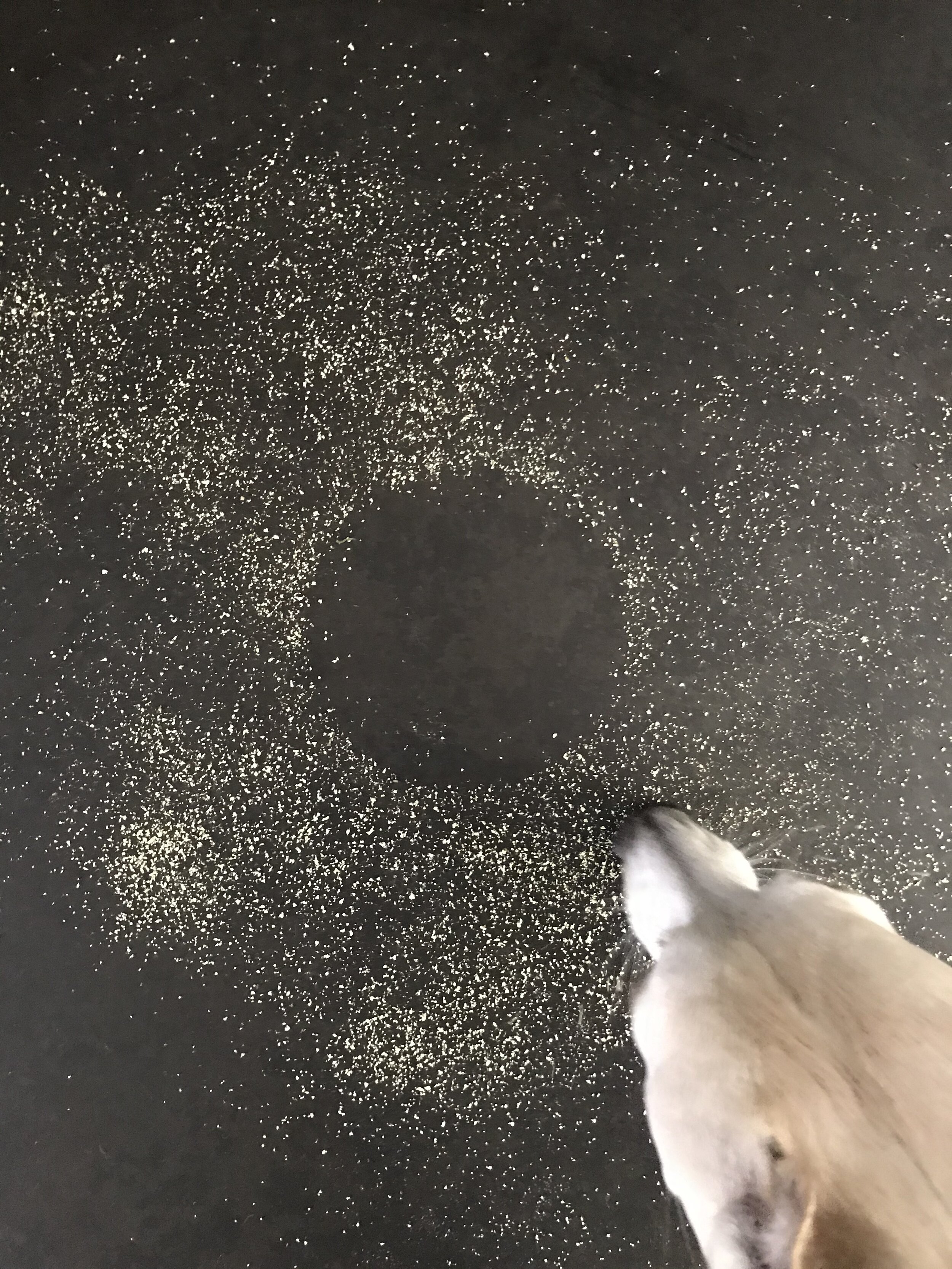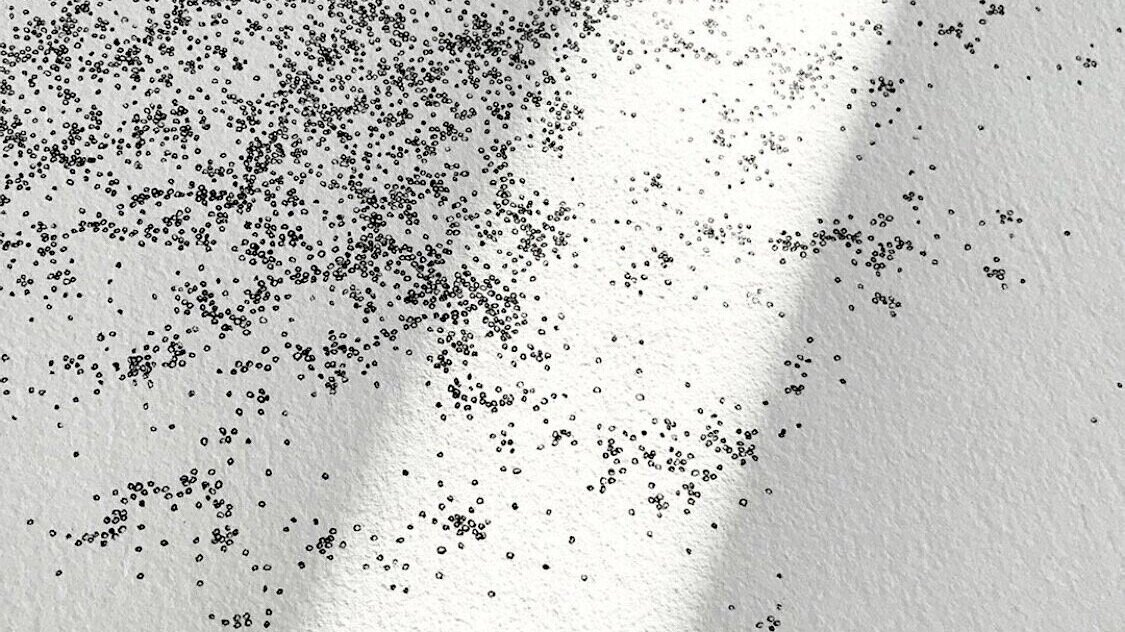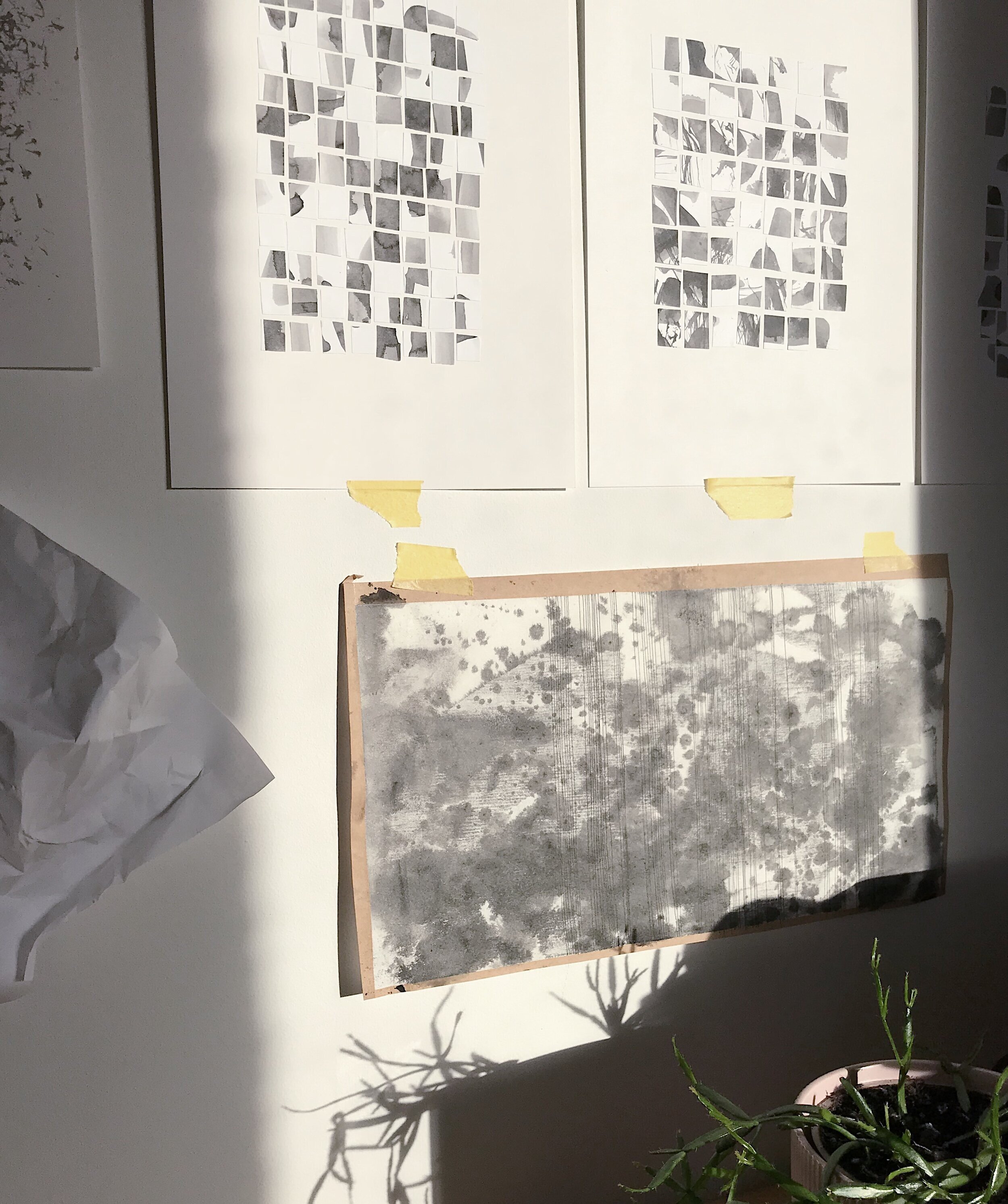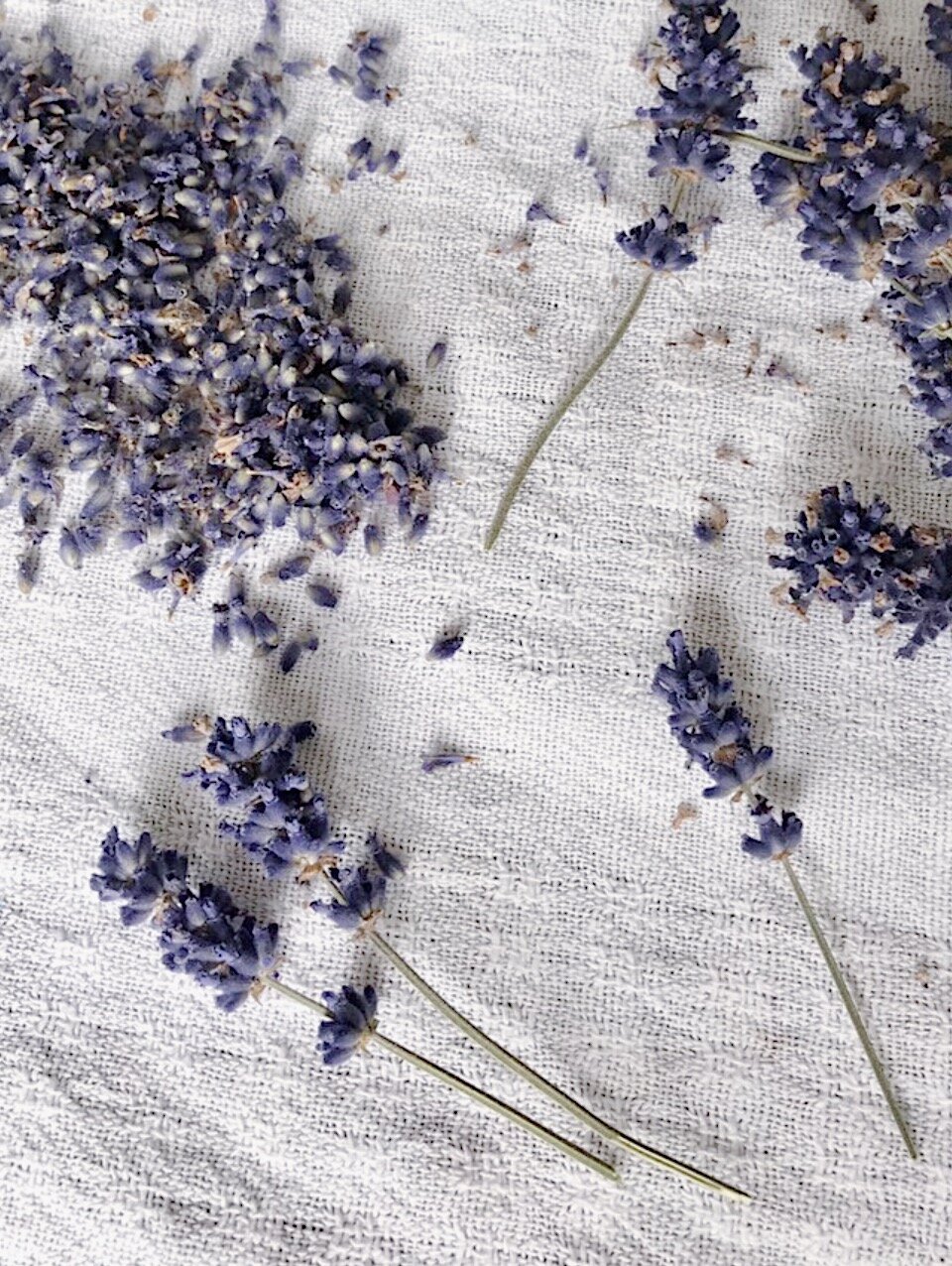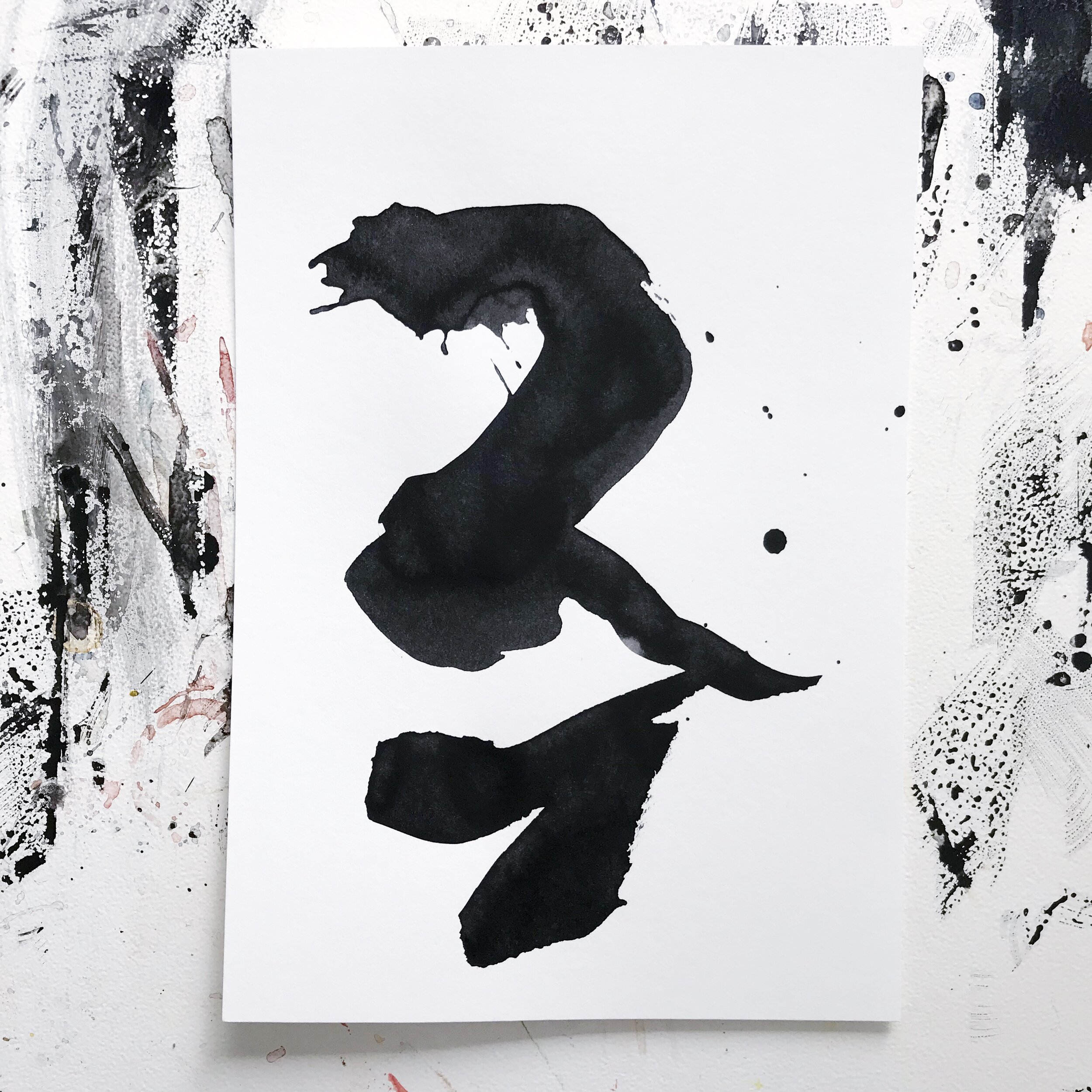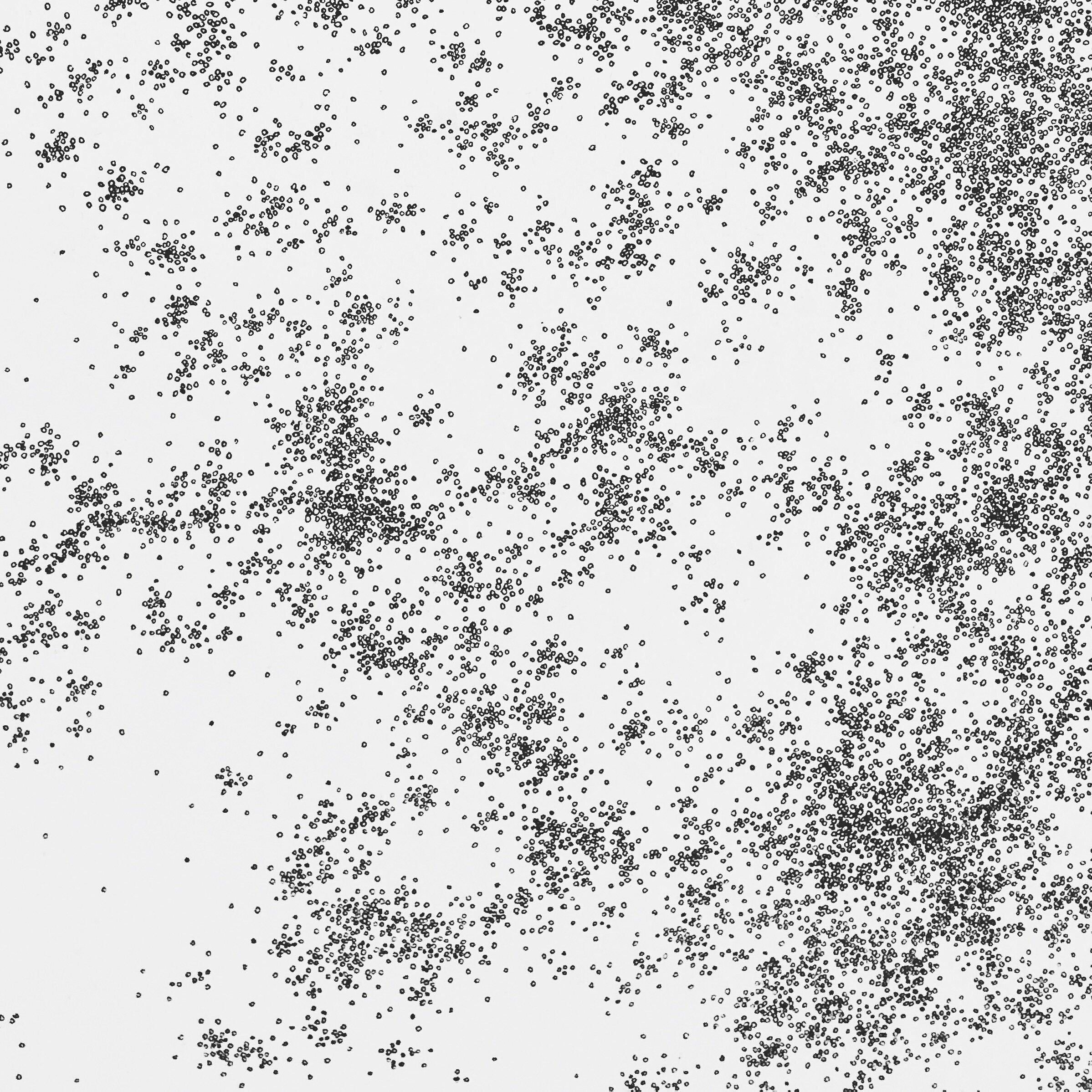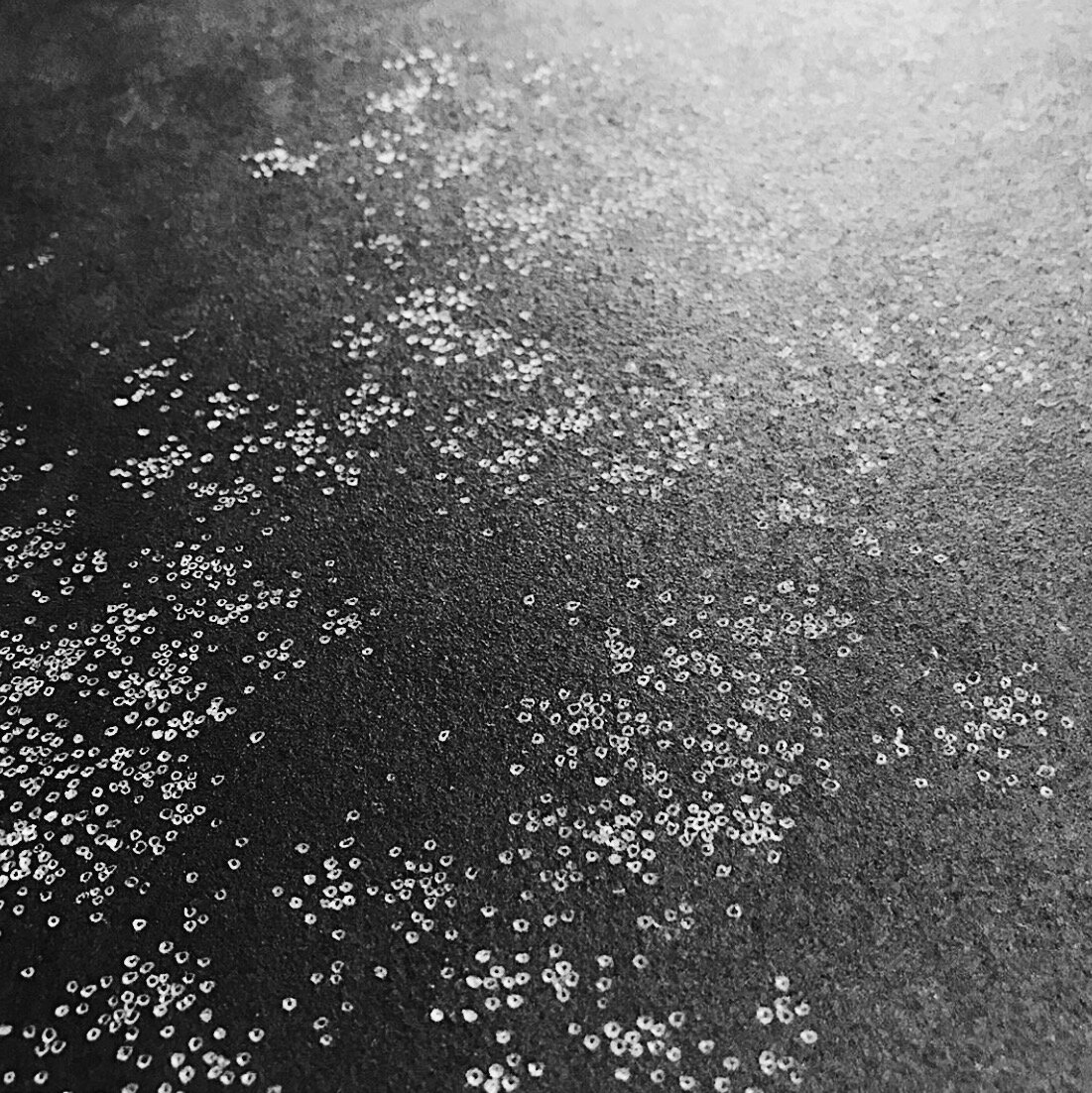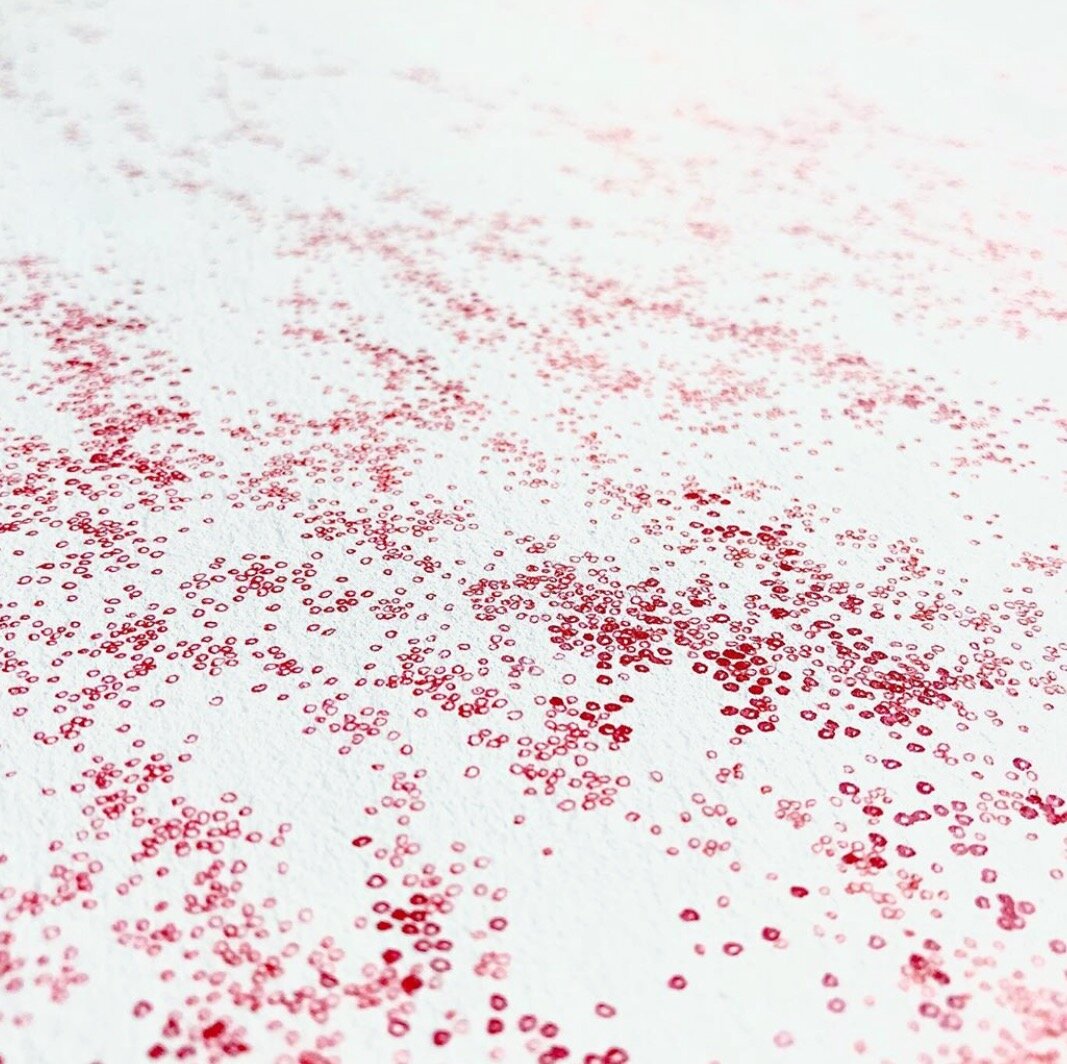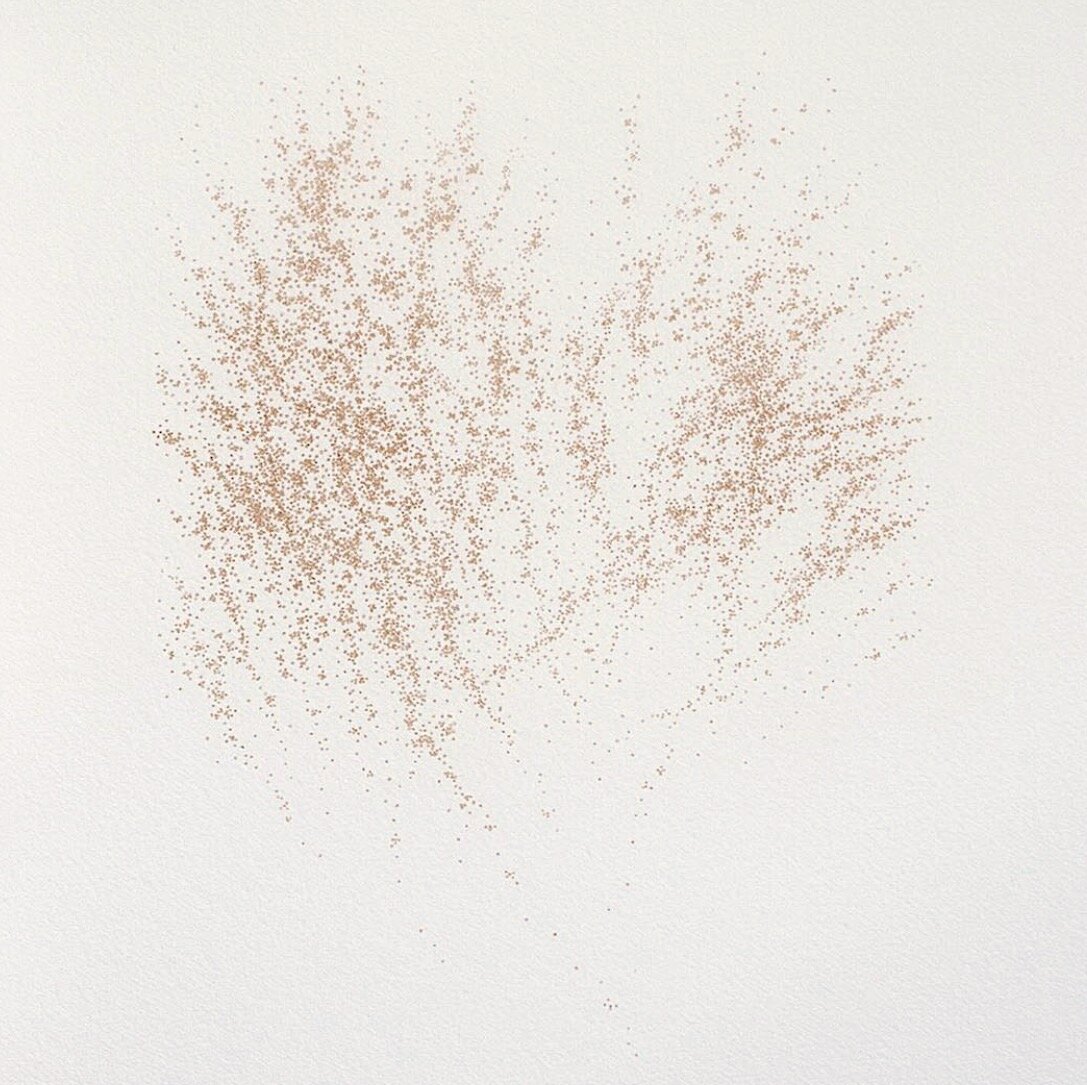VIEWPOINT | July 2020
A view from the heart of the Scottish Highlands.
Jana Emburey on slowing down, the healing powers of nature and finding a new flow state.
As the world turned indoors, Jana Emburey found herself spending more time outdoors. Nature has always been a source of inspiration for Jana, who lives in Cairngorms National Park in the heart of the Scottish Highlands, but in the past few months it became a lifeline.
Jana shares a glimpse of what she has been looking at during her daily walks and discusses how the past few months have changed not just her daily habits but also her practice, seeking to approach ideas of interconnectivity and oneness through expressive spontaneity and joy.
As the world started closing itself off at the end of March where did that find you?
I live in a National Park in the Cairngorm mountains, in Scotland, with my husband Jamie and our whippet, Millie. We are in the middle of the countryside, with just three sets of neighbours. There are beautiful fields and forestry all around us and walks on our doorstep.
There is a lot of wildlife here, sheep and their lambs just over the fence, deer in the forest nearby, hares running in the fields and occasionally coming down to our driveway, pheasants (one of which visits us for food every day) and so many different types of birds…lapwings, cuckoos, owls, wood peckers, swallows, curlews, wild geese, various birds of prey, I can go on and on.
I had to limit myself in terms of venturing out, keeping mostly to the fields and forest around the house and our garden, but that seemed more than enough.
Being connected to the natural world around us is so soothing and comforting, I never get tired of observing nature. But this time, with our activities and movements restricted, it was particularly interesting to watch the seasons change; seeing the snow and frost give way to luscious greens and new life.
I was in a sense watching time pass, but also questioning what that means and how it works; thinking about the ephemeral nature of things, life’s transience, but also its resilience and the different ways everything is connected. I have always been interested in exploring and expressing these themes in my work.
Has nature always been a part of your life? Clearly, you draw inspiration from nature; is that something that came about naturally and do you still actively seek it?
I grew up in Slovakia, in a lovely wine growing village called Senkvice, not far from the capital Bratislava. Everyone there had big gardens, often with a small vineyard, just like we did.
I moved to Scotland when I was 18 years old and eventually settled in Dunnet in Caithness, the northernmost point of the Scottish and British mainland.
I loved living in the very far north of Scotland with its mostly deserted, beautiful sandy beaches, rugged coastline, open, flat landscape and expanse of sky.
The one thing I missed there was trees, so I am grateful to be where I am today.
I have always found the natural world to be one of the main sources of inspiration for my work.
Visually of course, but also as a way to contextualise patterns of human behaviour, our perception of time and being.
Sometimes I take photographs but I draw and paint mostly from memory, only trying to capture some of the colour, light, shadows, lines I come across.
I don’t often seek to do representational work anymore as I used to for many years. Nowadays, painting feels almost like extracting some essence, memory, light.
I get inspired by organic shapes and colours, the vastness of the sky, how the light influences how we perceive what we see, re-occuring patterns that seem to self-replicate infinitely if you take notice.
I particularly love getting close to the wide varieties of tiny plants, fungi and lichens, observing the details.
It was this juxtaposition of the micro and macrocosms that gave impetus to the drawings that developed into the Oblivion series of works that I have been focusing on for quite some time now.
Initially, I started researching the parallels between the process of cell division observed under a microscope and human expansion, thinking about population growth and the impact on the environment. That led to thinking about patterns of human behaviour, the human condition and its relationship to universal cosmic dynamics.
The seemingly random patterns in these works form a greater whole. Each of the tiny cells is complete on its own but is also an integral part of a greater organism, like our own relationship with the cosmos, time and space.
Observing nature makes you aware of the oneness of all things, how everything is connected and fundamentally the same, made of the same particles, chemical substances and energy.
The process of making these works is incredibly absorbing as it has to be very careful and precise. It is almost like a single point focus meditation, forcing you to slow down, concentrate on your intention but, at the same time, expand your awareness.
The experience of the process and the outcome are inextricably linked in that way. It is a very lengthy process but I normally find the meditative aspect quite soothing and nourishing.
Were you able to access your studio freely during this period of confinement and carry on with your practice?
We bought our house nearly three years ago and spent a lot of that time renovating it. I have been planning to build a bigger studio in the future, until then I normally work in the two spare rooms we have and the wooden, not very weather proof outbuilding during the summer.
When Covid-19 hit we had to convert one of the rooms into a second bedroom, a quarantine room. My husband is a police officer on the frontline so we were both expecting to get sick at any moment. Luckily we didn’t.
As I have family in Slovakia I kept up to date with what was happening there too. Their lockdown happened a lot faster and cotton masks were made for the whole population by seamstresses around the country with financial support from the local councils. Everyone in the country had a mask within five days of declaring the emergency. So I began to research how to make them too, consulted with doctors here in Scotland and very quickly the second room was cleared out, disinfected and made into a sewing room for masks.
Sewing is also a way of making, albeit in a more mechanical way; things have to be considered but it is a different way of thinking/doing than painting. I studied Theatre Set Production which included costume making but actually I learned to sew and knit when I was about 10. In the late 80’s in Czechoslovakia it wasn’t unusual to make your own clothes, during Communism the choice in the shops was still quite limited but a there was huge variety of fabrics available in shops.
So I lost my spaces for painting but, at the time, I felt the need to help in any way that I could.
The other thing I was drawn to during those first weeks was gardening. We had always wanted to grow our own fruit and vegetables and it felt like a good time to start. It was still March when I covered our dining room table with a plastic sheet and sowed lots of seeds, for the seedlings to be planted in the garden and small poly tunnels as soon as the weather was favourable. Of course, I sowed way too many seeds and ended up with a forest of plants I didn’t have space for! I ended up sharing them with friends, family, neighbours, and key workers who kept us going, I suppose it felt like another small way to give back.
So for weeks that was my daily routine. Sewing masks, sowing seeds and spending time with Millie, taking her for long walks. This time outdoors became a way to process emotions, thoughts and visual references; even though I wasn’t actually painting, the outdoors became my studio for a while and that was exactly what I needed.
Has it been a seamless return to your practice? Do you feel there is continuity in your most recent and current work or has there been a shift towards a new direction?
When I finally felt ready to reclaim the temporary bedroom as a studio it was like a wave of relief. Even though it was good for me to take a break, not drawing or painting was very unusual for me, it was probably the longest time of absence since I was a child.
I guess these strange times affect everyone in a different way. But one of the benefits of slowing down is that it enables you to become more gentle, not just with others but with yourself as well. My father always tried to teach me about patience and not judging, I guess this period made me think of his advice on another level as well.
So, this time of absence from painting, the changes in the world, the slower pace, gratitude and appreciation of the simple things, led me to become a lot more spontaneous and brave again about making purely for the joy of it.
Suddenly, there was a sense of real living and making in the moment, a lack of worry about judgement by others.
The work I delved into is a culmination of many things I’ve done in the past, expressive strokes and experiments in my sketchbooks, memories, light and shadows, birds in flight, the flora and fauna I love to get close to, the micro world combined with the vast and the infinite. And also going back to questioning how time works, how everything is connected.
You can’t escape who you are when creating; there will always be a connection to my past works. But at this moment, instead of seeking to slow down and focus through my process, I feel the need to expand and explore, to be more in a state of flow than in a place of stillness.
My very first explorations into painting were through watercolour and now I’m finding myself going back to it and using it more than I have done in a very long time. I am also incorporating inks, graphite, charcoal and oil pastels.
I am also experimenting with different application techniques, using various tools, brushes of course, but also card, transferring, staining, pulling paint with pieces of paper, sticks, feathers, plants. Occasionally there is a bit of a collage; I am pressing flowers and leaves at the moment and planning on incorporating those elements as well.
I am very open and welcoming of accidental marks, finding signs and meanings in the unexpected.
Perhaps through this new body of work I am embracing the uncertainty that emerged these past few months.
Overall, I am finding that this new way of living, mostly in solitude, spending a lot more time outdoors, working in the garden and, most importantly, continuing to develop my practice, is something that I really want to carry on with into the future.
In spite of what is happening in the outside world I feel at peace in the environment that I am creating, right here.
JANA EMBUREY
UNIQUE WORKS & EDITIONS


